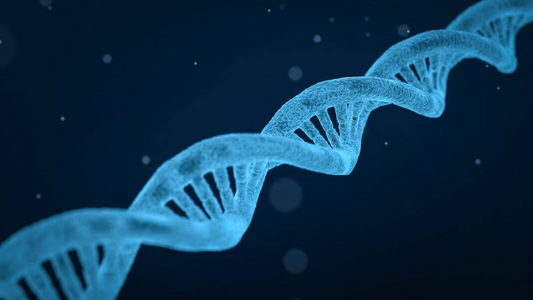Avoiding these common mistakes may give you a better chance of reaching your body goals.
Almost 50 percent of adults in the United States try to lose weight each year. (1) Unfortunately, about 90 percent of these people will eventually regain all the weight they lose. (2)
Losing weight is never easy, but if you’re following outdated or poor advice, losing weight can be harder than usual. If you want to successfully lose fat that stays off, it’s important to build habits that are sustainable even once you reach your target weight.
Many people make the mistake of confusing fat loss for weight loss. You may see the number on your scale going down, but often times quick weight loss is caused by losing a combination of fat, water weight and muscle. Losing fat is a long-term process that requires proper nutrition, regular exercise, and a healthy lifestyle.
People often make these 6 mistakes when trying to slim down. Avoiding these common errors may give you a better chance of reaching your body goals.

1. Cutting Too Much Dietary Fat
In the 1990s and early 2000s, low-fat foods were everywhere. People mistakenly believed that eating dietary fat made them fat. Companies loaded their products with sugar as a replacement.
However, over the past 20 years, we’ve learned that eating dietary fat is an important part of maintaining a healthy body weight. (3) Your body also needs fat to absorb vitamins and to produce hormones that keep your body in balance.
Two healthy types of fat that have the potential to improve your heart and overall health are omega 3s and monounsaturated fat. Monounsaturated fat is most commonly found in avocados and olives. Omegas 3s are found primarily in fatty fish.
The following are examples of sources of fat that make healthy additions to your diet:
- Fish oil supplements
- Avocado
- Nuts
- Salmon
- Herring
- Olives
It’s important to keep in mind that fatty foods are usually calorie-dense. It’s not a good idea to cut fat completely, but it’s still a good idea to consider the number of calories you’re consuming.
Key Takeaway
You may want to minimize your consumption of low-fat foods that are high in sugar. Fat is a critical nutrient for your body and completely cutting fat from your diet could be harmful. Eating foods high in omega 3s, such as fatty fish, and monounsaturated fat, such as avocado, can help you improve your overall health and improve your weight loss.

2. Focusing Only on Nutrition
If you want to hit your target weight goals, it’s important to eat a healthy diet. However, getting regular exercise can also help you optimize your weight loss. Exercise can also help you increase your muscle mass, improve your posture, and allow your body to burn calories more efficiently.
A 2014 meta-analysis compared the effect of diet-only programs to exercise-only programs and exercise and diet programs. (6) The researchers looked at more than 1,000 combined participants and found that improving both dietary and exercise habits together led to more long-term weight loss than changing only diet or only exercise.
The American Department of Health and Human Services recommends getting at least 150 minutes of moderate aerobic exercise a week or 75 minutes of vigorous activity. They also recommend strength training all muscle groups at least twice per week.
The following activities fall under the category of moderate aerobic activity: (7)
- Brisk walking
- Swimming
- Mowing the lawn
- Gardening
- Slow biking
The following are considered vigorous activities:
- Running
- Hiking
- Fast biking
- Jumping rope
- Aerobic dances like Zumba
Key Takeaway
Research suggests that combining a healthy diet with at least 150 minutes of moderate activity or 75 minutes of vigorous activity per week can help you improve your weight loss and optimize your health.

3. Not Considering Liquid Calories
It can be easy to forget about the calories in your drinks. If you’re somebody who regularly enjoys sugary drinks or alcoholic beverages, you may be underestimating the total number of calories that you’re taking in.
For example, a tall Frappuccino from Starbucks with whip cream contains about 48g of sugar and 280 calories. (8) If you want to lose weight without much effort, switching to sugarless coffees and teas is an easy way to decrease your caloric intake. A tall Starbucks Americano contains 10 calories and no sugar.
It’s also a good idea to minimize your intake of alcoholic beverages. Each gram of alcohol contains seven calories. For example, an average glass of red wine contains about 12g of alcohol or about 84 calories.
When you have alcohol in your system, your body uses the alcohol as an immediate energy source before burning fat. (9) Over time, regularly drinking alcohol can drastically slow your weight loss progress.
Key Takeaway
It’s a good idea to minimize your intake of high-calorie drinks like sugary teas and coffees, alcoholic beverages, and juices.

4. Eating Too Many Processed Foods
Many processed foods have poor nutrient-densities and are low in fiber, high sugar, and filled with unhealthy fats.
Examples of processed foods include the following:
- Cookies
- Chips
- Pre-packaged desserts
- Sodas
- Cereal
- Most fast food
Even if a processed food contains the same number of calories as a natural food, it often has significantly less nutritional value. A candy bar might have the same number of calories as two bananas but has far fewer vitamins, minerals, and fiber.
Foods like candy, microwavable dinners, instant noodles, chips, and artificially sweetened beverages are referred to as ultra-processed. These foods often aren’t filling and you’re likely to overeat them.
A 2014 study looked at the health effects of consuming ultra-processed foods in Brazilian families. (10) The researchers found that families who ate more ultra-processed foods were significantly more likely to be overweight.
If you aren’t sure if a food is natural or processed, you can count the ingredients. Natural foods only contain one ingredient whereas processed foods contain more than one. A general rule of thumb is the more ingredients a food contains, the more processed it is. Processed foods are also often packaged, made in a factory, or formulated to stimulate your appetite.
When grocery shopping, it’s a good idea to read the labels of all your food. If there are any ingredients you don’t know, you may want to put the product back or look up the ingredients.
Key Takeaway
Most single-ingredient natural foods are more filling and nutritious than processed foods. Minimizing your intake of processed foods may help you lose weight by decreasing the number of insulin spikes you experience. Keeping your insulin levels stable allows your body to better regulate hunger and burn fat.

5. Not Considering Stress or Sleep
Even if you’re eating well and exercising regularly, you may struggle to lose weight if you’re stressed or not sleeping properly.
When you feel stressed, your body releases a hormone called cortisol. Stress can be physical, like in the case of over-exercising, or mental. Both types of stress cause the release of this hormone.
A study published in 2015 looked at the effect of stress on metabolism. (11) The researchers found that elevated cortisol levels significantly lower your body’s metabolism. The researchers found that being chronically stressed for a year could lead to a gain of 11 pounds compared to being unstressed for that year based on changes in metabolic rate.
We all feel stressed at times, and stress is sometimes unavoidable like in the case of the sudden death of a family member. However, you may be able to reduce some causes of stress from your life by changing your habits such as scheduling time for relaxing activities and sleeping more.
Key Takeaway
Finding ways to reduce stress in your life may help you lose weight. Some types of stress are unavoidable, so you may want to focus on types of stress that you have control over. Making time for activities like meditation, spending time with friends, and sitting in nature may help you unwind.

6. Solely Counting Calories
You've probably heard that in order to lose weight, you need to burn more calories than you eat. But if it were as simple as that, couldn't everyone just eat 1,000 calories of donuts every day and lose weight?
In 1958, Max Wishnofsky, MD, created the 3,500 calorie rule. This rule states that cutting your calorie intake by 3,500 per week will lead to a pound of fat loss per week. However, research in the past ten years has found that the 3500-calorie rule overestimates weight loss. (4) Cutting your diet by 3,500 calories per week may not actually lead to a full pound of weight loss because of hormonal and metabolic changes that happen as you lose weight.
Another major problem with this rule is that it doesn’t take into account the source of your calories. (5) We now know that not all calories are equal. For example, consuming a high-sugar meal causes a rapid spike in your insulin levels, which causes your body to store energy in fat cells. Eating a meal with the same number of calories from natural foods containing fiber, protein, and healthy fats causes a much smaller insulin spike.
Everyone’s body is different, so there’s no one-size-fits-all rule for how many calories you need to eat to lose weight. A diet plan that works for you might not work for your friend. Recording the food you’re eating and making changes based on your results is likely a better strategy than following a set diet plan.
Following a calorie-focused diet may work in the beginning of your diet, but for long-term weight loss, it’s a good idea to focus on improving the quality of the food you’re eating.
Key Takeaway
Solely counting calories is not the most effective form of weight loss since everyone's body is different, and the source of the calories aren't being taken into account. A better strategy to lose weight and maintain your desired body composition is to eat a balanced diet with many whole foods and monitor your results over time. It’s important to not only count calories but also consider where the calories are coming from.
QUICK DISCLAIMER
This content is for informational and educational purposes only. It is not intended to provide medical advice or to take the place of medical advice or treatment from a personal physician. Readers of this content are advised to consult their doctors or qualified health professionals regarding specific health questions. Neither the author(s) nor the publisher of this content take responsibility for possible health consequences of any person or persons reading or following the information in this educational content. All readers of this content, especially those taking prescription or over-the-counter medications, should consult their physicians before beginning any nutrition, supplement or lifestyle program.
Sources




